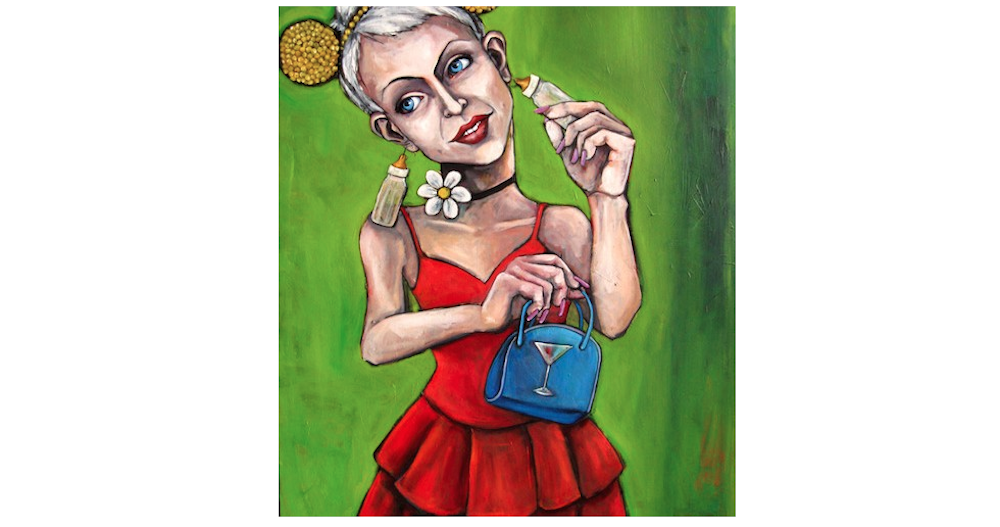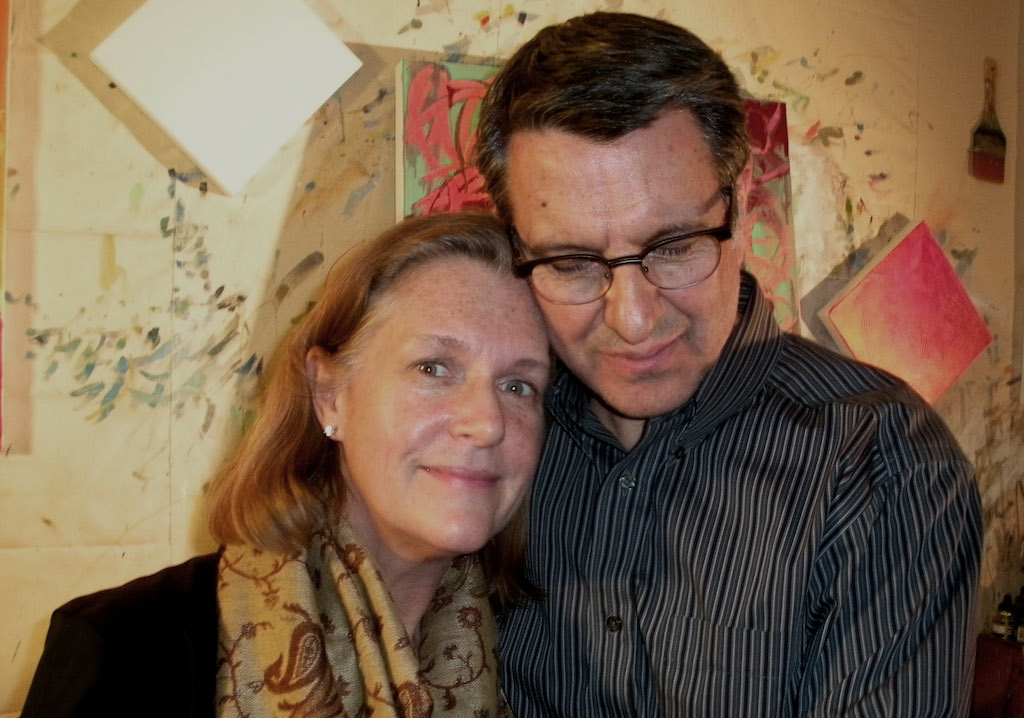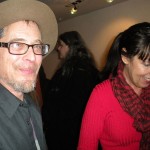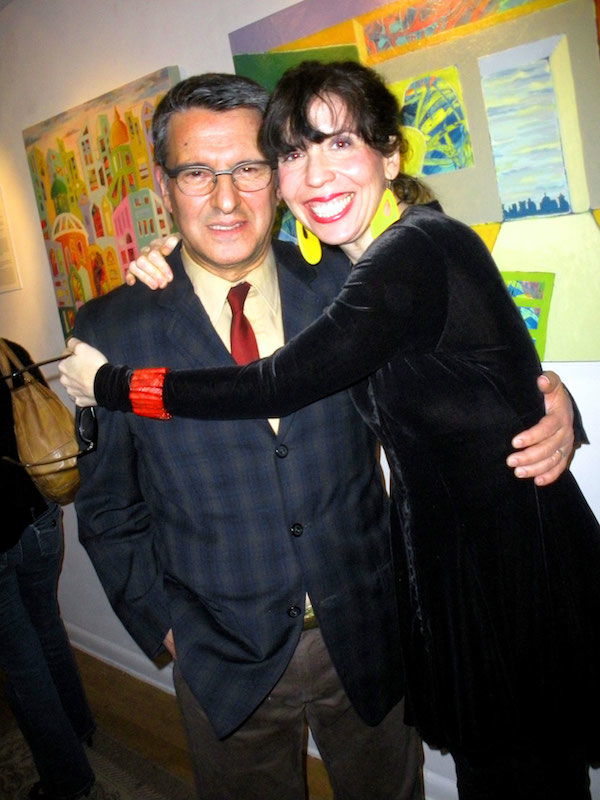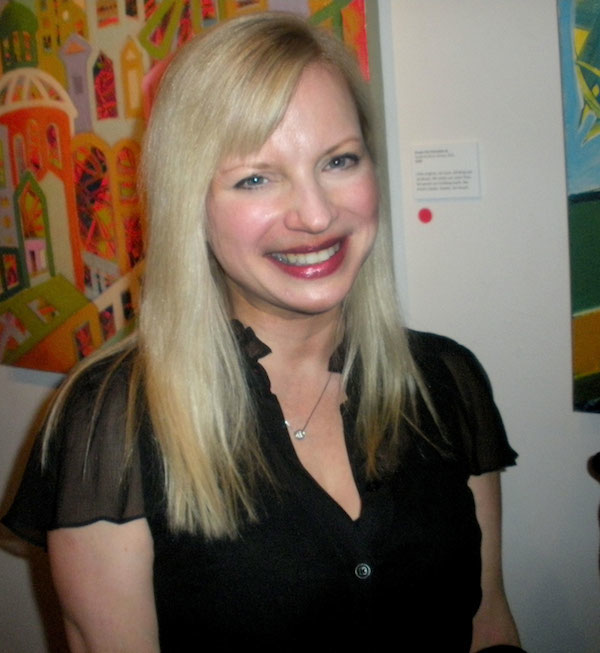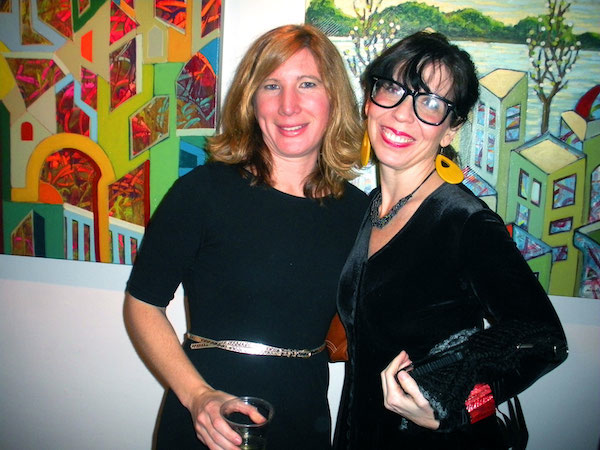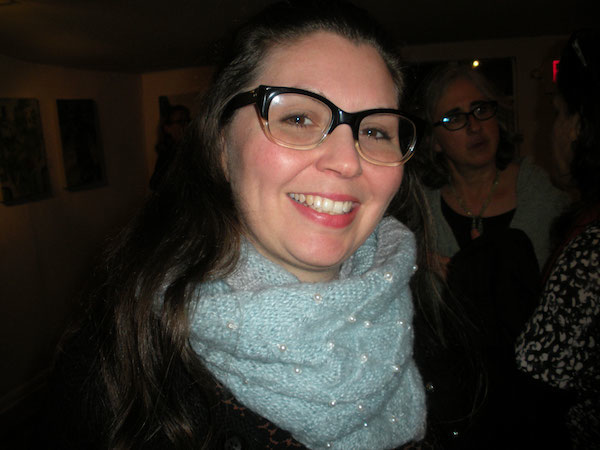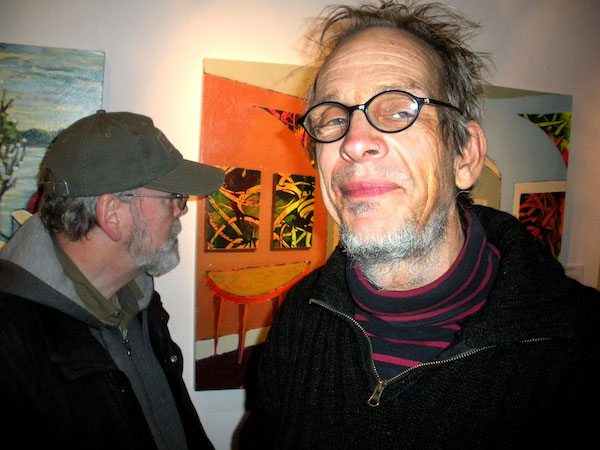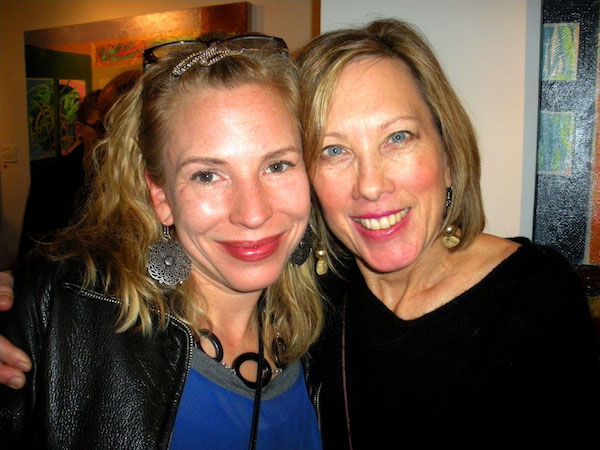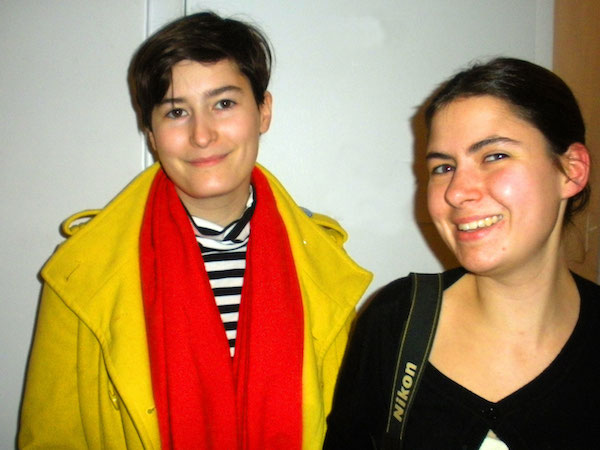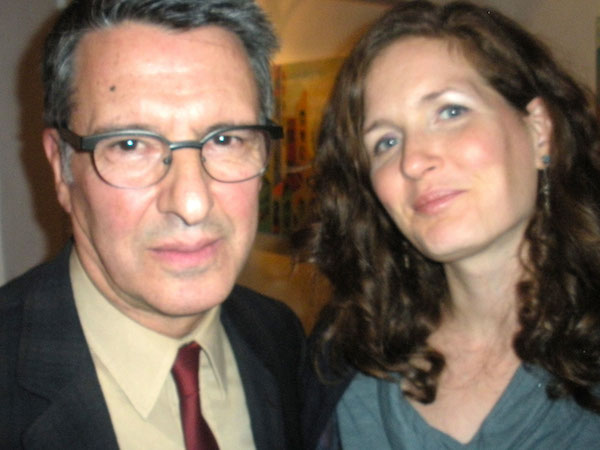What Minás Gallery has meant to Baltimore’s Creative Community by Jack Livingston
“Dear Friends of Minás Gallery & Boutique,
We are delighted to report that we are sad to be going out of business after 22 wonderful years…”
So began the startling email I, along with many others, received in January from from the unflappably cheery Peggy Hoffmann, co-owner with artist/husband Minás Konsolas of the business known to most as simply Minás. Peggy’s bittersweet and humorous email was met with such an outpouring response of sadness and concern that, according to Hoffman, it took her over a month to answer the many emails that flowed in afterwards.
Minás Gallery and Boutique, located on the avenue in Hampden after the original store started in Fells Point, has become a beloved community institution over the past twenty-two years. It has been a consistent alternative to the alternative, an open and welcoming arts destination that downstairs sold snazzy second hand clothes, jewelry, books, and sundries and upstairs operated a very active and diverse gallery in a small sun filled rectangular space. Here, activities from poetry to belly dancing were allowed flourish with great freedom and gentle minimal guidance. It has been a place of good art, good food, good drink, and good people.
Minás Gallery has operated in a very elemental salon style, presenting work created or curated by people selected by Peggy and Minás. The couple has operated more by trusting their own feelings and instincts than following the usual art world structure with its academic view of what is to be esteemed. Minás Gallery’s general ambiance has always been broader and less youth-centered than much of Baltimore’s art scene and has been inviting and accessible for this reason. Their luxurious pace of visual exhibitions, at two months each, provided ample time for an audience to view artwork and to experience it through a diverse range of performances and events in the space. The exhibition schedule was punctuated by semi-annual solo shows of paintings by the co-owner Minás, whose work is much in demand these days.
The couple employed a smart business plan that is common among artists who want to make it on their own terms. Instead of curating a store and gallery with cool things and then waiting for clients to arrive, they honored the tradition of the art underground: the gallery invited a broad community of people on a repeated basis for poetry readings, yoga, dance, film, visual art, as well as great eclectic merchandise. Visitors were met with engaging conversation and treated with respect and interest, without a trace of art snobbery. Visitors soon became friends, many a kind of extended family, all loyal to the holistic approach Minás presented: an easy-going yet smart one-stop place for arts and culture. That is one of the main reasons people are so saddened by the news of the closure. A broad community shared a stake in the place – it feels like losing a friend.
It is worth nothing that Minás employed a unique business model that few other spaces replicate, where exhibiting artists could sell work on their own terms. Minás gallery took no commission from sales of artwork. Instead, they traded work by the artist to offset the cost they spent on the opening night spread of delicious Greek food and wines. In the process, the couple showed others how much they valued owning their art, and they now have a fine collection. This strategy meant artists could put affordable prices on their work, while most commercial galleries usually take forty to fifty percent of a sale, and collectors, many of whom were art community folks, could afford to pay and did. This resulted in a growing group of collectors who frequented the gallery. Conversely, the artist could choose to make work that wasn’t for sale without being shut out of the exhibition experience. I learned this all firsthand, as I was one of the many artists lucky enough to exhibit there. Based on the support and feedback I received, that exhibition remains one of the high points in my life in Baltimore.
Such spaces as Minás cannot be planned – they are organic. They succeed and grow more akin to a family and as such, they are ever changing, moving and now, closing up shop. Changes are necessary, because such efforts are best let go when they have run their course. The couple decided to stop when it is right for them. While Minás Gallery and Boutique will be closing its doors in March, they are not leaving us.
Minás Konsolas will be painting full time in his home studio and the store will move online where Peggy Hoffman will continue to manage the business. The couple will, no doubt, continue to play a key role in the arts community. That said, the closing of the gallery does mark an end to an era that cannot be replaced, a style that cannot be exactly replicated, a location that once was an incubator of many a wonderful creative endeavors will be gone, and as such it is a bittersweet loss to us all.
To listen to a soundcloud interview with Minás and Peggy:
In addition, Jack has asked members of the community that played a role in Minás to share their thoughts:
Lyle Kissack: When Buckminster Fuller came to NYC to pursue his dream of building the Dymaxion Home, he was sustained by friends. One gave him a bed, the other, Roma Marie, provided a basement club with five-cent soup, free coffee, and some black bread tossed in for good measure. She single-handedly kept people going.
Minás is of her ilk. He has been an advocate for the arts in Baltimore for two decades plus. Not content to paint and write (though he could have been,) he opened a store that doubled as a gallery, first in Fells Point and then in Hampden, creating spaces for countless artists and writers to present their work. He put his money where his heart was, his head following thereafter, and made a living helping artists do the same. I am a grateful recipient of his generosity. Without people like him and his lovely wife/compatriot, Peggy, we are diminished as an Arts community. The energy, love, and dedication they put into running Minas Gallery is an incalculable piece of the funky puzzle we call Baltimore. We owe them a tip of our collective hats, and wish them well in all future endeavors.
Lyle Kissack is an artist, musician, teacher, and father, active in Baltimore for a quarter century. His exhibition, “Photographic Drawings,” was shown at the Minas Gallery in 2008.
Betsey Boyd: Peggy and Minás are artists in lots of ways. Minás is obviously an extremely gifted painter in his own right. But he’s also an expert art show designer, a curator, with natural flair. Each time my artist father, Hal Boyd, arrived to hang his two shows at the gallery, Minas greeted us warmly, dressed in dark blue jeans, his sleeves rolled up. Dad, ever over-prepared, had come to town in his red SUV with about 20 extra paintings. Minas proceeded to choose the works he wanted and to arrange the room in a clean, pleasing manner, allowing as many of Dad’s colorful, surreal works to live on the walls as he could — we couldn’t believe how much work he packed lightly into that long sunny space.
Before he hammered his nails, he painted the walls and brightened the space so that Dad’s art show would feel fresh and all his own. Peggy, we all know, curates boutique clothes (and gift items) like a true diva, though she’s one of the most unassuming women you’ll meet — she’s got an amazing eye for fashion and decor. But she’s an artist with people, too. When a small child enters her shop, I love to eavesdrop. While the kid’s parents browse, she and the girl or boy talk dinosaurs, snowstorms, spaghetti, life; she’s fluent in German, but she also speaks Little Kid like a translator. I admire and appreciate Peggy and Minas for all they bring to Baltimore; I love them as friends; I admire them as creators and good karma exemplars.
Betsy Boyd is a fiction writer and journalist — she serves as senior editor of Baltimore Fishbowl and teaches writing at the University of Baltimore
Lauren Bender: Minás and Peggy kindly asked me to curate a monthly performance evening for their BOITE program and were so generous–they gave me free reign and trusted me without really even knowing me yet. We started the Show-and-Tell series and it really took off. They took care of press, networking, and generally getting the word out, and they are so well-connected that I never had to worry about an audience. Most importantly they are both so gracious. You can’t walk into the shop or the gallery or an event and not feel like you are a vital and well-loved part of one of Baltimore’s artistic communities. I can’t thank them enough for welcoming me and encouraging me to develop an event I might not have otherwise thought up.
Lauren Bender is a teacher, twin, and sporadic writer/artist happily living in Hampden. She curated the ‘Show and Tell’ series at Minás.
Heather Rounds: I met Minás in the 90s when his store was still in Fells Point. I don’t think I’d patronized the store more than a couple of times when he offered me a chance to exhibit some paintings. I was maybe a rickety 20 years. Shy and only made of murky ideas. He was confident exhibiting my work was a good idea. And, after some years lived elsewhere, some long distances between us, I once again found him, this time in his store in Hampden, now with the lovely and spirited Peggy at his side. “You should hold a film series here,” they said. No matter that I had no idea how. Minas and Peggy were confident that it could happen. And so it did. That’s how it operated with them: opportunity, community, a cool ease and encouraging spirit dedicated to seeing ideas realized.
Heather Rounds is a writer and curator currently living in Baltimore. She curated a film series at Minás though she had no prior experience.
Barbara E. Wilgus: For the past eight years or so, my Christmas present to Peggy and Minas has been to work in the boutique and gallery for four days prior to the holiday. Those days summarize to me the magic that exists in this space: Getting to stand behind the counter with Minas as people come and go, always stopping to talk about art, about literature, about poetry, about beauty. Seeing how many people have an emotional response to coming there, not just to shop, but to connect. Minas and Peggy also connect- to the people coming and going, to each other, to me, to Baltimore. I say it was my Christmas present to them, but in truth it was really a precious gift to myself.
Barbara Wilgus is a nurse practitioner by day and supporter of the arts by life who has lived in Baltimore since 1997.
Julie Fisher: My brother Chip Irvine, a visual artist, introduced me to Minas, but I only had the most casual exchanges with Minas and Peggy after that—until I called and asked to put on a reading. I described what I wanted to do and they said sure! Now, eight years later Essential Sundays is still running, has been online as long and I’ve just launched LitMore which is Baltimore’s literary arts center in Mt. Washington, all an outgrowth of Essential Sundays. Unequivocally, Minas & Peggy gave me and many other artists from everywhere, but particularly Baltimore artists, an opportunity to shine and mingle with each other.
I’m still in a mild state of shock that they are closing their physical space. I am so grateful for all the time and energy Peggy and Minas have given to the people committed to arts in Baltimore. I know I’m not the only one who feels hugely indebted to them. Thank you Peggy and Minas.
Julie Fisher instigates communal public experiences at LitMore, Baltimore’s Literary Arts Center, which she founded, she also hosts Essential Sundays and PerVerse.

